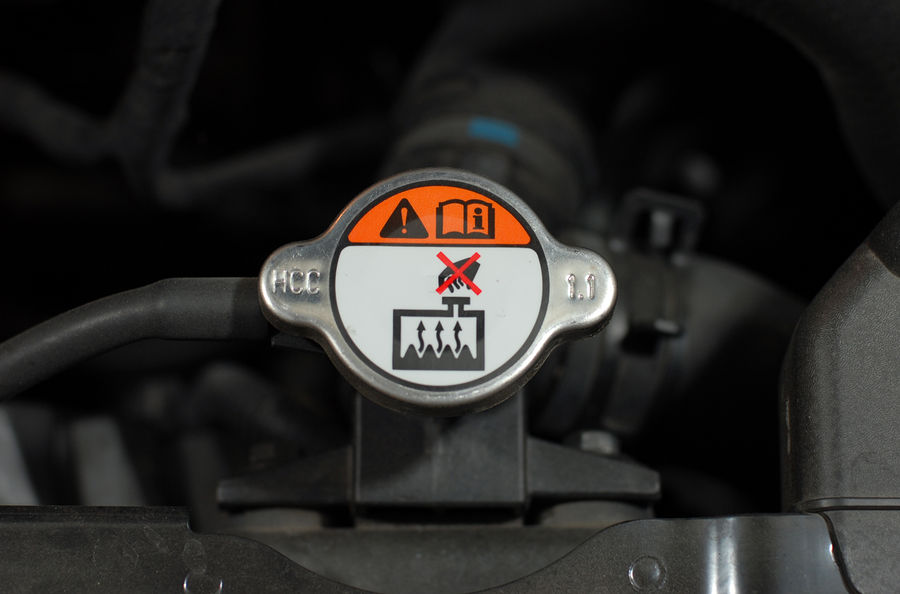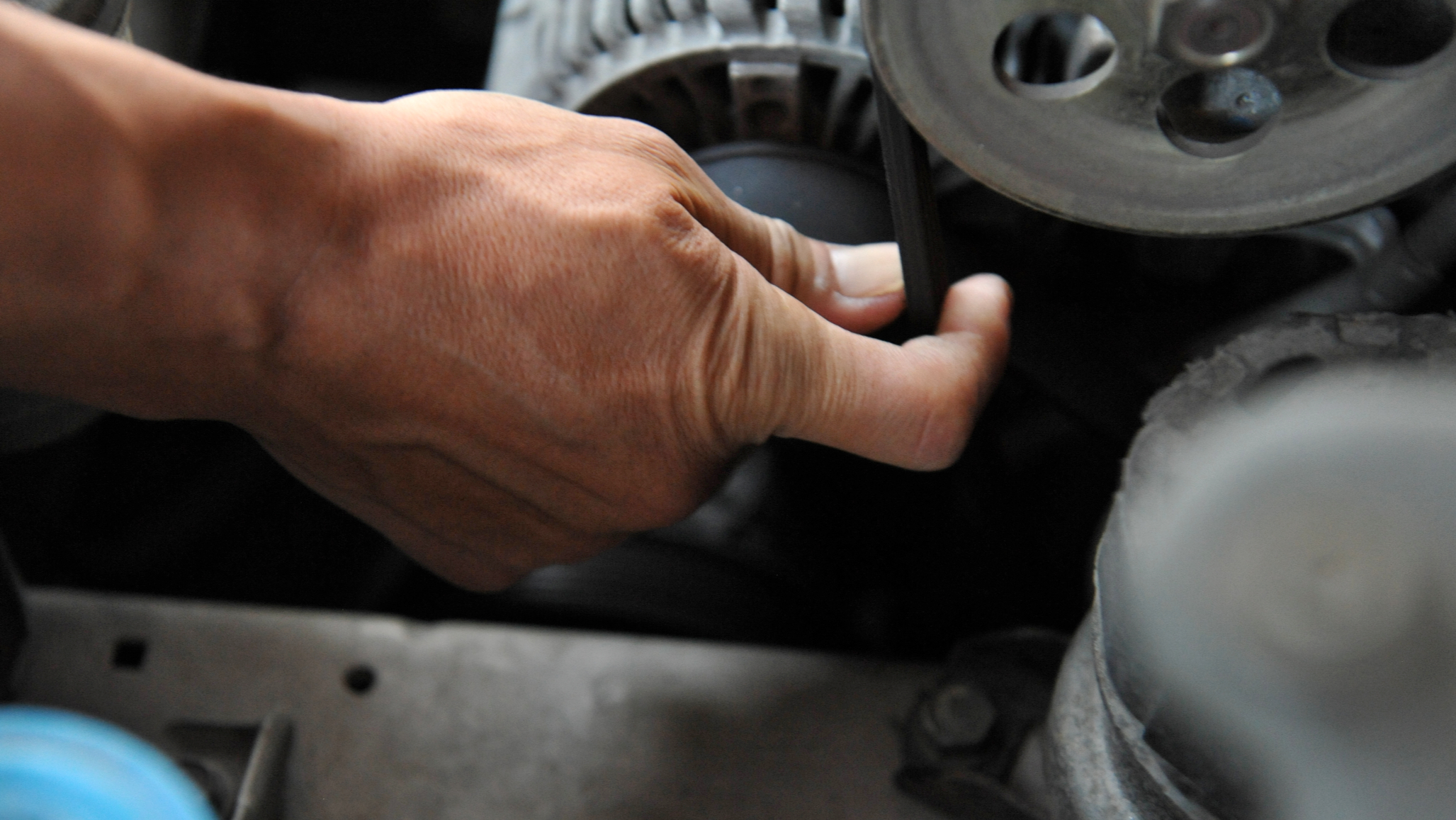
All of us living in southeast Virginia know that temperatures can go well beyond 90 degrees in the middle of summer. This ambient heat can increase the operating temperatures of your vehicle’s engine. A well-maintained cooling system is critical to keeping your car’s engine operating safely and efficiently. If the cooling system fails, it can often lead to costly repairs.
A car's cooling system circulates coolant mixture (antifreeze and water) through ports in the engine. This mixture absorbs the excess heat as it travels through the engine and releases it through the vehicle’s radiator. The radiator is cooled by the engine fans and air flowing through it as you drive down the road, starting the cycle once again.
 NOTE: The reason why the cooling system should never be filled with water alone is that the inner parts of the engine reach temperatures that are well beyond the boiling point of water and the antifreeze has a higher temperature resistance which prevents it from boiling.
NOTE: The reason why the cooling system should never be filled with water alone is that the inner parts of the engine reach temperatures that are well beyond the boiling point of water and the antifreeze has a higher temperature resistance which prevents it from boiling.
Taking care of the cooling system is an excellent preventive measure to ensure a long life to your vehicle. At Mike Duman Auto Superstore, we provide professional service for such regular maintenance.
Below are some cooling system checks that you can perform yourself.
Check the Coolant Level
As you can imagine, there is a certain amount of coolant that every vehicle needs to work correctly during the summer heat. There are several ways to check the coolant level, depending on the type of car you own. Some have a coolant expansion tank, while others do not.
 If your vehicle has one, then you can remove the cap from it and add the coolant mix, if necessary. If the expansion tank doesn't have a cap or your car doesn't have this tank at all, you will have to remove the radiator cap and check the coolant level there. To properly remove it, pressure to be released.
If your vehicle has one, then you can remove the cap from it and add the coolant mix, if necessary. If the expansion tank doesn't have a cap or your car doesn't have this tank at all, you will have to remove the radiator cap and check the coolant level there. To properly remove it, pressure to be released.
NOTE: All automotive cooling systems require the correct mixture of coolant and water. It is never a good idea to run straight water in your cooling system. Coolant (anti-freeze) has a much higher boiling point than straight water. Keeping the system from boiling is critical to the efficient operation of the cooling system. Consult your vehicles owner’s manual for the specifics and mixtures for your particular vehicle.
Warning: Never remove the radiator cap when the engine is hot! The immense pressure will cause the coolant and steam to pour from the radiator and can lead to serious injury. If you don't feel comfortable doing this procedure, contact a professional.
Check the Hoses and Connections
 Weak hoses will eventually leak or completely rupture. Visually examine the radiator and heater hoses for cracks and “swelling.” Squeeze them. If they collapse easily or if you see cracking or swelling, then it’s time for a replacement.
Weak hoses will eventually leak or completely rupture. Visually examine the radiator and heater hoses for cracks and “swelling.” Squeeze them. If they collapse easily or if you see cracking or swelling, then it’s time for a replacement.
While you are checking the hoses, pay attention to where the hoses connect to the engine and the radiator. Look for puddles or any sign of leaking. Sometimes a simple tightening of the clamp can stop a leak there, but if it persists, then there is a bigger problem and the system needs to be serviced.
Fans and Water Pump.
Some newer vehicles utilize electric fans in lieu of the traditional belt powered fan. A quick reference for this is if the fan(s) are mounted to the vehicle’s radiator they are electric. If the fan is on the front of the engine, then it is mounted to the systems water pump and operates the fan and the water pump. Visually inspect this belt for cracks, tightness, and excessive wear. Replace or adjust as necessary.
CAUTION: Be aware that if your vehicle has electric cooling fans, that they are temperature controlled. They can start at any time even if the vehicle is off.
Water Pump Drive Belt
 Even if your vehicle has electric fans, there is still a belt powering the water pump. The water pump is a critical component of any vehicles cooling system. The pump is mounted to the front of the engine with a pulley attached to a shaft. The belt drives the pulley causing the internal impeller to rotate causing coolant to circulate through the system.
Even if your vehicle has electric fans, there is still a belt powering the water pump. The water pump is a critical component of any vehicles cooling system. The pump is mounted to the front of the engine with a pulley attached to a shaft. The belt drives the pulley causing the internal impeller to rotate causing coolant to circulate through the system.
Examine the drive belts or the single serpentine belt for any signs of cracks chips, etc. Have the belt replaced if it shows any signs of excess wear or age.
Conclusion
Another clue to a failure in the system can be puddles under the car. They will typically be greenish, so don’t confuse condensation run off from your vehicles A/C system with a leak in the coolant system. If you’re not sure, dip your finger in the puddle. If it’s coolant, it will have an oily feel. If it’s condensation, it will simply feel like water.
Keeping the cooling system in top shape will ensure a longer life for your vehicle. It will also ensure that you will not remain stranded on the road with steam gushing from under the hood. If you are interested in a periodic check or scheduled maintenance, please feel free to contact Mike Duman Auto Superstore at 888-239-2076 or visit our contact page for more information.
